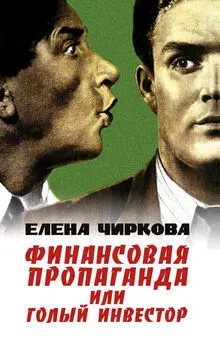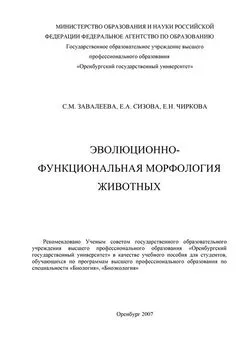Елена Чиркова - Анатомия финансового пузыря
- Название:Анатомия финансового пузыря
- Автор:
- Жанр:
- Издательство:ООО «Кейс»
- Год:2010
- Город:Москва
- ISBN:978-5-91848-001-4
- Рейтинг:
- Избранное:Добавить в избранное
-
Отзывы:
-
Ваша оценка:
Елена Чиркова - Анатомия финансового пузыря краткое содержание
Необычная по жанру и композиции, «Анатомия финансового пузыря» детально рассказывает о многих известных финансовых пузырях, имевших место хронологически – с XVI века до нашего времени, географически – от Японии и Кувейта до США; в ней сделан обзор психологических, социологических, экономических и финансовых объяснений подобных рыночных аномалий. Кроме того, исторические факты иллюстрируются дайджестами произведений мировой литературы, в которых они нашли отражение. Вместе с тем книга представляет собой серьезное научное исследование. В ней предложена цельная теоретическая концепция финансового пузыря: описаны предпосылки его возникновения и признаки наличия на том или ином рынке, прямые и косвенные «приметы» пузыря, опасности этого явления и его последствия для реального сектора.
Эта работа имеет прикладное значение и в первую очередь предназначена для практиков, занимающихся торговлей и инвестированием на фондовом рынке. Знакомство с идеями, предложенными в книге, позволит уменьшить риски вложений в переоцененные активы. «Анатомия финансового пузыря» будет интересна студентам и преподавателям финансовых, экономических и исторических специальностей, всем увлекающимся экономической и финансовой историей, филологам и любителям литературы, интересующимся темой отражения экономических реалий в художественных произведениях. А также всем, кто хочет научиться разбираться в экономической ситуации, складывающейся в конкретный момент.
Книга написана ярким, эмоциональным и образным языком, отличается оригинальным и доступным изложением сугубо экономических сведений, неожиданной интерпретацией известных фактов. Многие события и концепции, о которых рассказывается в этой книге, ранее в русскоязычных изданиях не освещались.
Анатомия финансового пузыря - читать онлайн бесплатно ознакомительный отрывок
Интервал:
Закладка:
45. Bernanke, Ben, and Gertler, Mark (2001), Should Central Banks Respond to Movements in Asset Prices? // American Economic Review. May 2001. Vol. 91. No. 2.
46. Bikhchandani, Suchil, Hirshleifer, David, and Welch, Ivo (1992), A Еheory of Fads, Fashion, Customs and Cultural Change as Informational Cascades // Journal of Political Economy. October 1992. Vol. 100. No. 5.
47. Bikhchandani, Suchil, Hirshleifer, David, and Welch, Ivo (1998), Learning from the Behavior of Others: Conformity, Fads, and Informational Cascades // Journal of Economic Perspectives. Summer 1998. Vol. 12. No. 3.
48. Binswanger, Hans (1998), The Challenge of Faust // Science 281. July 31, 1998. Iss. 5377.
49. Binswanger, Hans (1994) , Money and Magic. A Critique of the Modern Economy in Light of Goethe’s Faust). – Chicago: University of Chicago Press.
50. Black, Fischer (1986), Noise. Journal of Finance, Vol. 41. No. 3. July 1986.
51. Blanchard, Oliver, and Watson, Mark (1982), Bubbles, Rational Expectations and Financial Markets // P. Wachtel. Crises in the Economics and Financial Structure. – Lexington: Lexington Books.
52. Brenner, Robert (2002), The Boom and the Bubble: The US in the World Economy. – London: Verso.
53. Brunnermeier, Markus (2001), Asset Pricing under Asymmetric Information: Bubbles, Crashes, Technical Analysis, and Herding. – Oxford: Oxford University Press.
54. Buffett, Warren, and Loomis, Carol (1999), Mr. Buffett on the Stock Market. The Most Celebrated of Investors Says Socks Can’t Possibly Meet the Public’s Expectations. As for the Internet? He Notes How Few People Got Rich From Two Other Transforming Industries // Auto and Aviation, Fortune Magazine. 1999. November, 22.
55. Buford, Bill (1990). Among the Thugs. – London: Vintage.
56. Bulow, Jeremy, and Klemperer, Paul (1994), Rational Frenzies and Crashes // The Journal of Political Economy. February 1994. Vol. 102. No. 1.
57. Camerer, Colin (1989), Bubbles and Fads in Asset Prices: A Review of Theory and Evidence // Journal of Economic Surveys. 1989. Vol. 3. No.1.
58. Camerer, Colin (1997), Taxi Drivers and Beauty Contests // Engineering and Science. 1997. No. 1.
59. Carswell, John (1960) , The South Sea Bubble. – London: Cresset Press.
60. Chan, Louis, Jegadeesh, Narasimhan, and Lakonishok, Josef (1996), Momentum Strategies, // Journal of Finance. December 1996. Vol. 51. No. 6.
61. Chancellor, Edward (2000), Devil Take the Hindmost: a History of Financial Speculation. – N.-Y.: Plume.
62. Costain, Thomas (1955), The Mississippi Bubble. – N.-Y.: Random House.
63. Cowles, Virginia (1960), The Great Swindle; the Story of the South Sea Bubble. – N.-Y.: Harper.
64. D’Avolio, Gene (2002), The Market for Borrowing Stock // Journal of Financial Economics. November-December, 2002. Vol. 66. No. 2–3.
65. Darwiche, Fida (1986), Gulf Stock Exchange Crash the Rise and Fall of the Souq Al-Manakh. – London: Routledge.
66. Dawson, Frank (1990), First Latin American Debt Crisis. The City of London and the 1822 – 1825 Loan Bubble. – Princeton: Princeton University Press.
67. De Long, Brandford, and Shleifer, Andrei (1991), The Stock Market Bubble of 1929: Evidence from Closed-end Mutual Funds // Journal of Economic History. September 1991. Vol. 51. No. 3.
68. Devenow, Andrea, and Welch, Ivo (1996), Rational Herding in Financial Economics // European Economic Review. April 1996. Vol. 40. No. 3–5 .
69. Donaldson, Glen, and Kamstra, Mark (1996), A New Dividend Forecasting Procedure That Rejects Bubbles in Asset Prices: The Case of 1929’s Stock Crash // Review of Financial Studies. Summer 1996. Vol. 9. No. 2.
70. Dreman, David (1998), Contrarian Investment Strategies in the Next Generation. – N.-Y.: Simon & Schuster.
71. Dreman, David (1977), Psychology and the Stock Market. – N. Y.: Amacom.
72. Edelstein, Robert, and Jean-Michel, Paul (2002), Japanese Land Prices: Explaining the Boom-Bust Cycle in Mera Koichi and Bertrand Renaud, ed. Asia’s Financial Crisis and the Role of Real Estate. – Armonk, N. Y.: M.E. Sharp.
73. Faber, Mark (2008), Tomorrow’s Gold. Asia’s Age of Discovery. – Hong Kong: CLSA Books, 2008. (Первое издание: Faber, Mark (2002), Tomorrow’s Gold. Asia’s Age of Discovery. – Hong Kong: CLSA Books.)
74. Fama, Eugene (1998), Market Efficiency, Long-Term Returns, and Behavioral Finance // Journal of Financial Economics. September 1998. Vol. 49. No. 3.
75. Faure, Edgar (1977), The Banqueroute de Law. – Paris: Gallimard.
76. Festinger, Leon (1957), Theory of Cognitive Dissonance. – Stanford, CA: Stanford University Press.
77. Flandreau, Marc, and Flores, Juan (2007), Bonds and Brands: Intermediaries and Reputation in Sovereign Debt Markets 1820–1830 // Working Paper. July 2007.
78. Fleckenstein, William, and Sheehan, Fred (2008), Greenspan’s Bubbles: The Age of Ignorance at the Federal Reserve. – N.-Y.: McGraw-Hill.
79. Flood, Robert, and Garber, Peter (1980), Market Fundamentals vs. Price Bubbles: The First Tests // Journal of Political Economy. August 1980. Vol. 88. No. 4.
80. Fodor, Giorgio (2002), The Boom that Never Was? Latin American Loans in London 1822–1825 // Working Paper University of Trento. 2002.
81. French, Doug (2006), The Dutch Monetary Environment During Tulipmania // The Quarterly Journal of Austrian Economics. Spring 2006.Vol. 9. No. 1.
82. Fridson, Martin (1998), It Was a Very Good Year. Extraordinary Moments in Stock Market History. – N.-Y.: John Wiley and Sons.
83. Fuller, Joseph, and Jensen, Michael (2002), Just Say No To Wall Street // Journal of Applied Corporate Finance. Winter 2002. Vol. 14. No. 4.
84. Galbraith, Kenneth (1993), A Short History of Financial Euphoria. – N.-Y.: Whittle Books.
85. Galbraith, Kenneth (1975), The Great Crash 1929. – London: Penguin Books, 1975. (Первое издание: Galbraith, Kenneth (1954), The Great Crash 1929. London: Penguin Books.)
86. Garber, Peter (1990), Famous First Bubbles // Journal of Economic Perspectives. Spring 1990. Vol. 4. No. 2.
87. Garber, Peter (1989), Tulipmania // Journal of Political Economy. June 1989. Vol. 97. No. 3.
88. Garber, Peter (2001), Famous First Bubbles. – Cambridge, Massachusetts: The MIT Press.
89. Gigerenzer, Gerd (2007), Gut Feelings: The Intelligence of the Unconscious. – N.-Y.: Viking.
90. Gigerenzer, Gerd (1991), How to Make Cognitive Illusion Disappear: Beyond ‘Heuristics and Biases // European Review of Social Psychology. 1991. Vol. 2.
91. Granovetter, Mark (1978), Threshold Models of Collective Behavior // American Journal of Sociology. May 1978. Vol. 83. No. 6.
92. Greenspan, Alan (2008), The Age of Turbulence. – London: Penguin Books.
93. Grinblatt, Mark, Titman, Sheridan, and Russ, Wermers (1995), Momentum Investment Strategies, Portfolio Performance, and Herding: A Study of Mutual Fund Behavior // American Economic Review. December 1995. Vol. 75. No. 5.
94. Grossman, Sanford, and Stiglitz, Joseph (1976), Information and Competitive Price Systems // American Economic Review. May 1976. Vol. 66. No. 2.
95. Harris, Ron (1994), The Bubble Act: Its Passage and its Effects on Business // Journal of Economic History. September 1994. Vol. 54. No. 3.
96. Hey, John, and Morone, Andrea (2004), Do Markets Drive Out Lemmings – Or Vise Versa? // Economica. November 2004. Vol. 71.
97. Hong, Harrison, Kubik, Jeffrey, and Solomon, Amit (2000), Security Analysts’ Career Concerns and Herding of Earnings Forecasts // RAND Journal of Economics. Spring 2000. Vol. 31. No. 1.
98. Irving, Janis (1982), Groupthink: Psychological Studies of Policy Decisions and Fiascoes. – Boston: Houghton Mifflin.
99. Jarvis, Christofer (1999), The Rise and Fall of the Pyramid Schemes in Albania // International Monetary Fund Working Paper. July 1, 1999. No. 98–99.
100. Jensen, Michael (2001), How Stock Options Reward Managers for Destroying Value // Harvard NOM Research Paper. April 2001. No. 04–27.
101. Lynch, Peter, and Rothchild, John (1993), Beating the Street. – N.-Y.: Simon & Schuster.
102. Katona, George (1975), Psychological Economics. – N.-Y.: Elsevier.
103. Kindleberger, Charles (1989), Manias, Panics, and Crashes: A History of Financial Crises. – N.-Y.: Basic Books. (Первое издание: Kindleberger, Charles (1978), Manias, Panics, and Crashes: A History of Financial Crises. – N.-Y.: Basic Books.)
104. King, Joseph (1910), History of the San Francisco Stock and Exchange Board. – San Francisco: The Stanley Taylor Company.
105. Klein, April (1990), A Direct Test of the Cognitive Bias Theory of Share Price Reversals // Journal of Accounting and Economics. July 1990. Vol. 13. No. 2.
106. Klein, Daniel, and Majewski, John (1994), Plank Road Fever in Antebellum America: New York State Origins // New York History. January 1994. Vol. 75. No. 1.
107. Kuran, Timur, and Sunstein, Cass (1999), Availability Cascades and Risk Regulation // Stanford Law Review. April 1999. Vol. 51. No. 4.
108. Kuran, Timur (1989), Sparks and Prairie Fires: A Theory of Unanticipated Political Revolution // Public Choice. April 1989. Vol. 61. No. 1.
109. Lamont, Owen, and Thaler, Richard (2003), Can the Market Add and Substract? Misspricing in Stock Market Carve-Outs // Journal of Political Economy. April 2003. Vol. 111. No. 2.
110. Larrick, Richard, and Soll, Jack (2003), Intuitions about Combining Opinions: Misappreciation of the Averaging Principle // INSEAD Working Paper. 2003.
111. Lee, In Ho (1998), Market Crashes and Informational Avalanches // The Review of Economic Studies. October 1998. Vol. 65. No. 4.
112. Leeson, Nick (1996), Rouge Trader. – London: Little, Brown and Company.
113. Leibenstein, Harvey (1950), Bandwagon, Snob and Veblen Effects in the Theory of Consumer Demand // Quarterly Journal of Economics. May 1950. Vol. 64. No. 2.
114. Lemiux, Pierre (2003–2004). Following the Herd. Regulation. Winter 2003–2004. Vol. 26. No. 4.
115. Levy, Eugene (2002), The Mind of Wall Street. – N.-Y.: Public Affaires.
116. Lewin, Henry (1968), Railway Mania and Its Aftermath, 1845–1852. – Newton Abbot: Davis and Charles. (Первое издание: Lewin, Henry (1936), Railway Mania and Its Aftermath, 1845–1852. – London.)
117. Lowenstein, Roger (2004), Origins of the Crash. – N.-Y.: The Penguin Press.
118. Macleod, Christine (1989), The 1690s Patents Boom – Invention or Stock Jobbing // Economic History Review. November 1989. Vol. 39. No. 4.
119. Mahar, Maggy (2004), Bull! A History of the Boom and Bust. – N.-Y.: Harper Collins Publishers.
120. Marсh, James (1991), Exploration and Exploitation in Organizational Learning // Organizational Science. February 1991. Vol. 2. No. 1.
121. McGrattan, Ellen, and Prescott, Edward (2000), Is the Stock Market Overvalued // Federal Reserve Bank of Minneapolis Quarterly Review. Fall 2000. Vol. 24. No. 4.
Читать дальшеИнтервал:
Закладка:










